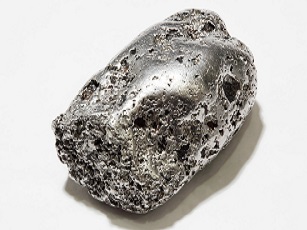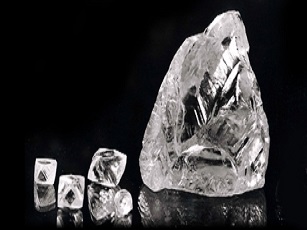BORON
ABOUT :
Boron is an important mineral used in various industries, from glassmaking to nuclear power, and in chemical applications like fertilizer and detergents. It's mined from different sources, including boron ore deposits, borax deposits, and brines. Boron ore deposits, typically found in sedimentary rock formations, are usually mined using open-pit or underground methods. The ore is then crushed and processed to produce boron oxide for industrial use.
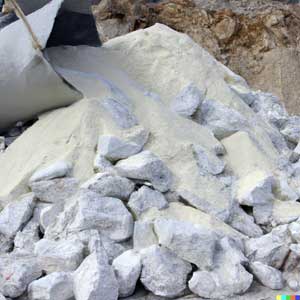
Borax deposits are commonly found in dry lake beds and salt flats, mined through surface or underground methods based on the deposit's size and depth. The extracted ore is processed to yield borax, essential for various industrial applications. Brines, underground saltwater reservoirs with high boron concentrations, are mined by pumping out the brine, which undergoes processing to produce boron oxide and other compounds.
Additionally, boron can be derived from borate minerals mined from sedimentary and volcanic rocks, processed to obtain boron oxide and other compounds. Overall, boron mining involves complex processes requiring meticulous planning and management. Miners must adhere to stringent safety protocols, utilize appropriate equipment, and consider potential environmental impacts, such as air and water pollution, to ensure responsible extraction.
BORON MINING AND PROCESSING :
Boron mining and processing involve extracting boron from ores and refining it for use. The extraction process begins by crushing the ore and grinding it into a powder. The powder is then mixed with water and reagents, causing the boron to float to the surface, where it can be skimmed off and dried.
Next, the boron ore undergoes several refining processes to remove impurities. This includes leaching, where the boron is mixed with an acid and heated to release impurities. The boron is then precipitated out of the solution, leaving behind a pure boron compound.
The pure boron can then be further processed into different compounds and forms, such as borax, boric acid, and other boron-containing products. These products find applications in various industries, including glassmaking, ceramics, metallurgy, agriculture, and industrial chemicals.
TYPES OF BORON MINING :
Boron mining can be divided into two main types: underground mining and surface mining.
Underground mining involves excavating tunnels and shafts into the earth to reach deposits of ore, while surface mining involves removing surface vegetation, dirt, and rock to reach ore deposits. Each type of mining has its own advantages and disadvantages, and the choice of which process to use depends on the type of ore being mined, its location, and the depth of the deposit. Advantages of underground mining include its relatively low cost, especially when the ore body is deep, and its ability to recover large volumes of ore. Disadvantages include the potential for cave-ins and flooding, as well as the difficulty of accessing and restoring the site after mining is complete.
Surface mining Surface mining has a lower cost than underground mining and is more accessible, but it can be more destructive to the environment and can leave behind large amounts of waste rock and soil.
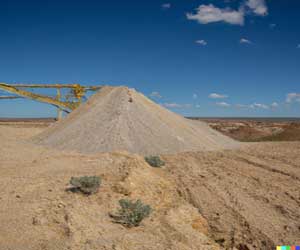
Regarding boron, the ore is then crushed to reduce it to one inch to make the refining process more efficient.
There are six primary steps required to obtain the refined borates :
Dissolving:
The crystallized crushed ore is mixed with a combination of borates and water to remove insoluble rocks, sand, and other solid materials.
Settling:
In this process, the solution is allowed to settle down to form separate layers in large settling tanks called thickeners. In this, the liquor stays on top, leaving the heavy clays to settle at the bottom.
Crystallizing:
To cool down the liquor, it is transported to tanks called crystallizers. The sudden drop in temperature allows the borates to form a slurry of borate crystals and water.
Filtering:
This process ensures the purity of the borates by filtering the water. When the slurry is poured into special fabric filters, the water is drawn away by a vacuum present beneath the filter.
Drying:
The wet crystals of boron are then transferred to huge rotating dryers. Hot air is blown over them to complete the drying process.
Conveying:
Now the dried crystals are sent through conveyor belts, ready for packaging, storage, and shipping purposes.
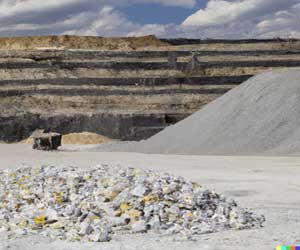
USES OF BORON :
More or less, all boron is used in the form of chemical compounds. One of the primary uses of boron is in manufacturing boron polymers and ceramics, which serve specific roles as high-strength lightweight structural and refractory materials.
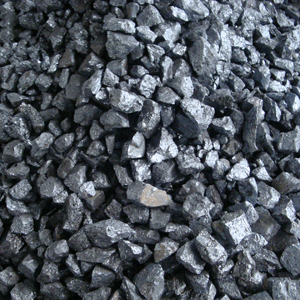
Regarding boron, about half of its large-scale consumption comes from additives for glass fibers in boron-containing fiberglass, used for insulation or structural purposes.
The mining process begins with the identification of the element. After identification, the land containing boron is analyzed, and the composition of boron is measured. Then, drilling, blasting, and shoveling methods are employed to collect the boron ore. Initially, holes are dug in the ground to explore the type and purity of the ore below the surface. Explosives are then used via drills to blast the larger holes, exposing the boron ore beneath the sandstone. The overburden is removed using trucks and stored for restoration.
The ore is then extracted using machinery or specialized tools. Compounds such as tincal, kernite, ulexite, and colemanite are important sources of boron, constituting 90 percent of the ore. The extracted ore is sent to the laboratory for immediate analysis to ensure miner safety. After each process, various tests are conducted to ensure safety.Industrially, borons are mined as evaporites such as borax and kernites, which crystallize when evaporated from an aqueous solution.

